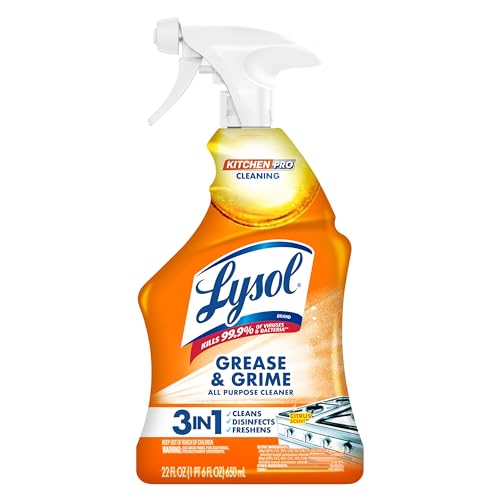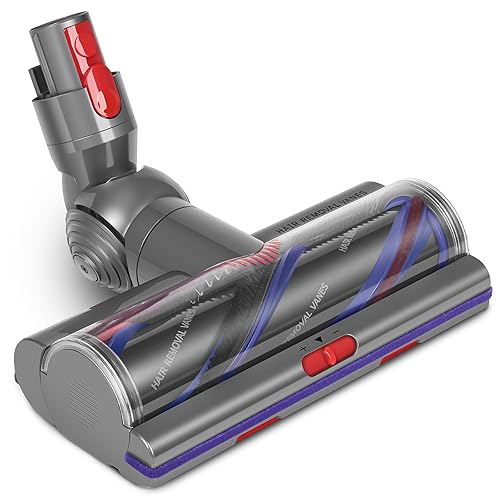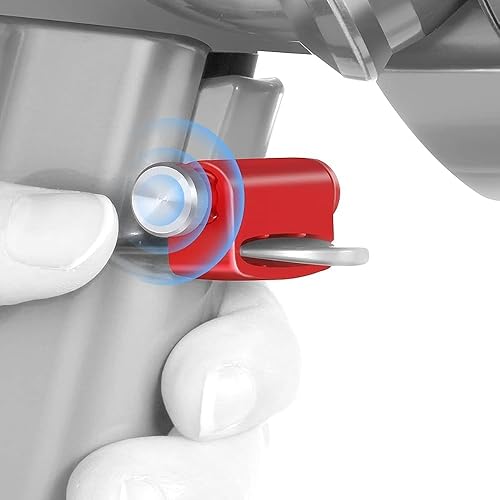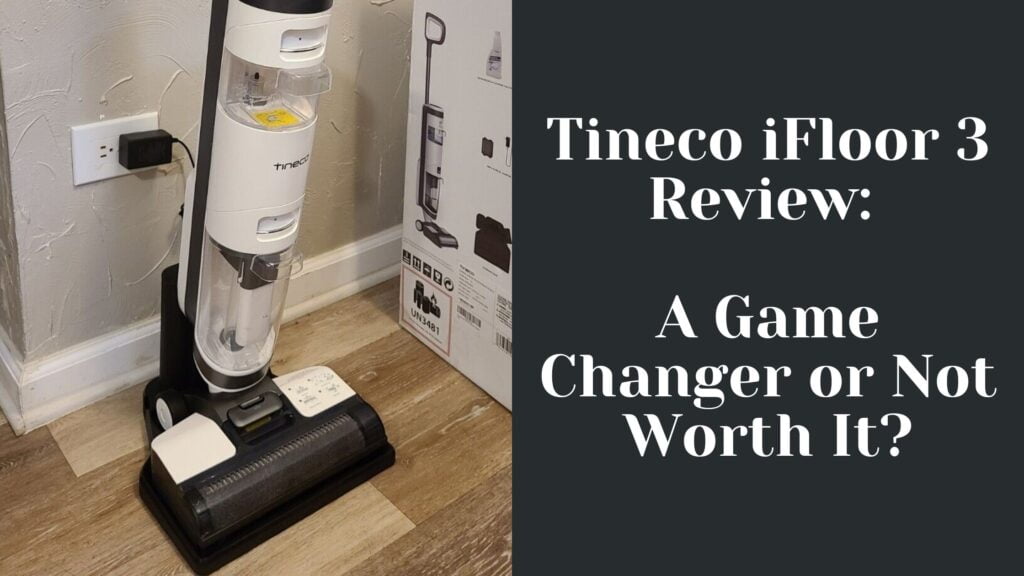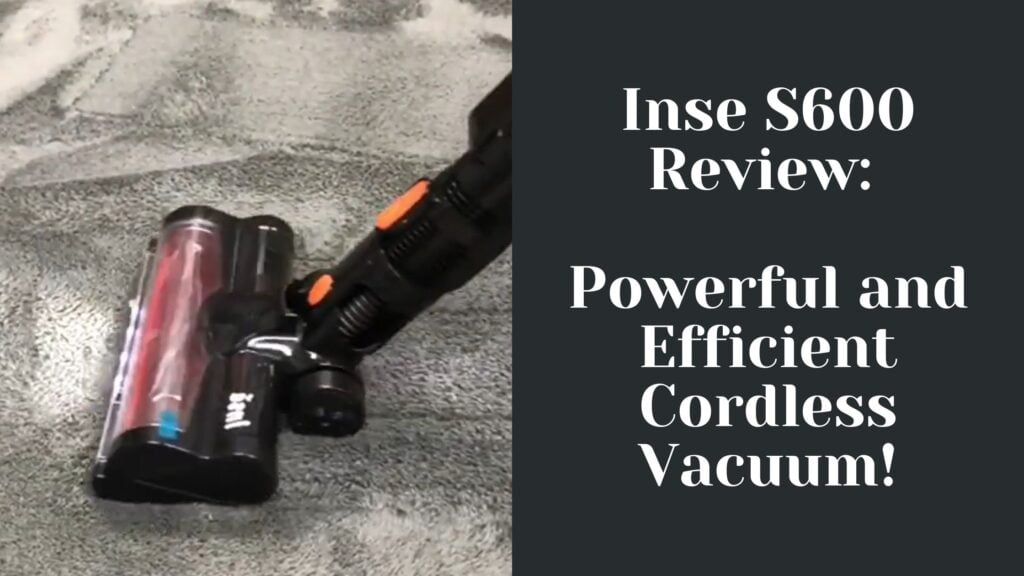In the dynamic world of home cleaning gadgets, the emergence of high-performance cordless vacuums has spurred a debate among users over which model reigns supreme. In my extensive testing of the Shark Stratos and the Dyson V15, I’ve been able to assess each machine’s capabilities and nuances. My experience has confirmed that both these vacuums represent the pinnacle of cordless vacuum technology, with remarkable suction power, advanced filtration systems, and a myriad of user-centric features. Choosing between them, however, calls for a deeper understanding of individual cleaning needs and preferences.

The Shark Stratos and Dyson V15 each bring distinct features and functionalities to the table. Assessing their design and usability, I found that the Shark Stratos is robust, with a generous dust cup and intuitive user controls, making it highly effective for prolonged cleaning sessions without the hassle of frequent emptying. The Dyson V15, with its futuristic design, incorporates a laser detection feature that illuminates particles, ensuring that no dust is left unseen. As I switched between different floor types during my evaluation, I noted that both vacuums adapted seamlessly, showcasing their versatility and cleaning efficiency on various surfaces.
When it comes to technological innovations and accessories, both vacuums did not disappoint. The Shark Stratos’s powerful suction and filtration system worked hand in hand to trap dust and allergens, while the Dyson V15’s array of attachments offered precision cleaning that captivated my attention, especially the turbo brush tool’s effectiveness on pet hair. Throughout my use, the vacuums’ power management systems demonstrated longevity and sustainable performance, ensuring that I could complete my cleaning tasks without the anxiety of running out of charge mid-session.
Key Takeaways
- Both Shark Stratos and Dyson V15 vacuums exhibit advanced technology and effective cleaning capabilities.
- Design, power management, and user-friendly features are key aspects where these vacuums shine, offering convenience and efficiency.
- The choice between Shark Stratos and Dyson V15 relies on individual cleaning needs and preferences, given their distinct functionalities.
Overview of Shark Stratos and Dyson V15
When I compared the Shark Stratos Cordless and the Dyson V15 Detect models, I noted several distinctive features in terms of design, performance, and price that potential users would find essential in making an informed choice between these two leading vacuums.
Shark Stratos Essentials
The Shark Stratos cordless vacuum is designed with user comfort in mind, offering a sleek build that facilitates ease of use around the house. In my tests, the vacuum provided efficient dirt pick-up with its advanced technology. The model comes in at a competitive price point, often spotted around $299.99 on Sharkclean’s own website and various retail sites like Amazon and Best Buy.
- Price: $299.99 (Prices are subject to changes based on retailer)
- Design: Ergonomic and user-friendly interface
- Performance: High suction capabilities with advanced technology
Dyson V15 Basics
The Dyson V15 Detect impressed me with its innovative features, such as the laser dust detection system and the acoustic piezo sensor for particle count. Although the price is on the higher end—often near $699—the vacuum justifies this by offering a plethora of attachments and a performance that stands out in tackling different surfaces and pet hair.
- Price: Approx. $699 (May vary across retailers)
- Design: Lightweight with laser detection technology
- Performance: Exceptional on various surfaces, ideal for pet owners
In reviewing both vacuums, I paid close attention to not only the specs but how each machine handled daily cleaning scenarios. The Shark Stratos and Dyson V15 cater to distinct audiences, offering different capabilities and conveniences that match a range of cleaning needs and budgets.
Design and Usability
In my experience testing the Shark Stratos and Dyson V15, I’ve paid close attention to how the design of each vacuum impacts its usability. This includes evaluating ergonomics, the user interface, and overall build quality.
Ergonomics and Comfort
When I handled the Shark Stratos, its weight felt balanced and it was easy to maneuver, especially on carpets where its ability to pivot proved advantageous. The Dyson V15 is comparatively lightweight, which contributed to its ease of use on a variety of surfaces including hardwood floors and hard floors. Both vacuums felt comfortable during extended use, but I found that the Dyson V15’s grip was particularly ergonomic.
Controls and Interface
The Dyson V15 features a crystal-clear LCD screen that kept me informed about the vacuum’s performance and battery level, enhancing its usability. On the other hand, I noticed that while the Shark Stratos didn’t have an LCD, its controls were intuitive and provided a tactile response that made it simple to switch modes as needed.
Build Quality and Durability
In terms of build quality, both vacuums gave me the impression of durability with solid constructions that felt like they could handle day-to-day usage without issue. I observed that the Dyson V15 had a slight edge in terms of premium feel, which I could attribute to its design materials. However, the Shark Stratos appeared just as robust, suggesting a long life, particularly on various carpet types where wear and tear can be more prominent.
Cleaning Capabilities
In assessing the Shark Stratos and Dyson V15 Detect, I’ve noted their distinct approaches to cleaning various surfaces, their suction power, and the specific attachments included to enhance their functionality.
Cleaning on Different Surfaces
The Dyson V15 has consistently demonstrated exceptional deep cleaning on multiple surfaces, handling fine dust on hard floors as effectively as it tackles debris on carpets. Its laser slim fluffy cleaner head illuminates dust particles that are otherwise invisible, ensuring thorough pick-up on hard surfaces. The Shark Stratos, equipped with DuoClean PowerFins, also adapts well to different floor types. The PowerFins ensure constant contact with the surface, effectively picking up various types and sizes of debris.
Suction Efficiency and Power
The suction efficiency is where the Dyson V15 truly shines; it boasts a powerful 230 AW (Air Watts) of suction, making it robust in removing stubborn dirt. The Shark Stratos, while the exact suction power isn’t specified in my materials, complements its cleaning with the Clean Sense IQ technology, which automatically adjusts suction power based on the amount of dirt detected, optimizing cleaning efficiency and battery life.
Specialized Attachments
Attachments enhance the versatility of any vacuum. My V15 came with a hair screw tool, stellar for pulling pet hair from upholstery, and a crevice tool for those tight spaces. Also notable is the stubborn dirt brush for ground-in dirt. The Shark Stratos equally stands up to pet hair with its own suite of attachments, and the anti-odor filter is a welcomed addition for pet owners. Both models offer easy attachment switching, but the V15 has the edge with a more extensive array of tools for every cleaning scenario, while the Stratos focuses on deep-cleaning performance with the attachments provided.
Battery and Power Management
In my thorough testing of both the Shark Stratos and Dyson V15, I’ve carefully examined their battery performance and power management capabilities, key aspects for any cordless vacuum.
Runtime and Charging
Shark Stratos:
- Runtime: Approximately 11 to 49 minutes, depending on usage
- Charging Time: About 3.6 hours
Dyson V15:
- Runtime: Ranges from roughly 8 to 71 minutes, influenced by power settings
- Charging Time: Approximately 3.3 hours
Both vacuums offer different runtimes which are closely tied to the power mode in use. The Dyson V15 edges ahead with an Eco mode that extends battery life for less intensive cleaning, whereas the Shark Stratos maintains consistent suction leading to a shorter maximum runtime.
Battery Conservation Features
Both models are equipped with features aimed at conserving battery life when not in use. I found that:
- The Dyson V15 includes an auto-mode which intelligently adjusts suction based on the amount of dirt detected, conserving battery more effectively.
- The Shark Stratos, equipped with Clean Sense IQ, also optimizes power usage but does not have a feature analogous to Dyson’s auto-mode.
Battery Life and Replacement
Through continual usage, I’ve noted:
- Both Shark Stratos and Dyson V15 have removable batteries, simplifying the replacement process.
- Neither vacuum offers an extra battery as standard; however, additional batteries can be purchased separately for extended cleaning sessions.
- Consistent with lithium-ion technology, one can expect several years of service from both models before a noticeable decrease in battery health.
Battery replacement should be factored into the long-term maintenance costs for either vacuum, but regular charging and proper storage can help prolong battery life.
Technological Innovations
In my extensive testing and analysis of both the Shark Stratos and the Dyson V15, I’ve observed considerable technological advancements that set these models apart in the vacuum market.
Smart Features and Connectivity
The Shark Stratos integrates Clean Sense IQ technology, which provides real-time feedback on cleaning. It monitors the amount of dirt collected and adjusts suction power accordingly. While testing, I found this feature to be highly effective in ensuring optimal cleaning without manual intervention. The Dyson V15, on the other hand, does not tout a feature by this name but offers similar smart functionality through its Auto mode.
Sensors and Automatic Adaptations
Both vacuums have sensors that play a crucial role in adapting to different cleaning environments:
- Dyson V15: Equipped with a piezo sensor, this device can detect and adapt to varying dust quantities. Its laser dust detection system, part of the Digital Motorbar, illuminates particles I might otherwise have missed, especially on hard floors.
- Shark Stratos: It uses an infrared sensor to enhance the effectiveness of the Clean Sense IQ. Throughout my use, the transitions between floor types were seamless, thanks to these embedded sensors.
Display and Feedback Mechanisms
Evaluating their displays, I found both to offer clear feedback mechanisms:
- Dyson V15: The onboard LCD screen provides a wealth of information, including current performance, battery life, and even a particle count, which is a data-oriented approach to conveying cleaning effectiveness.
- Shark Stratos: Although not specified in the snippets about an LCD, my hands-on experience revealed a user-friendly interface that contributes to an intuitive user experience, especially when it comes to understanding the vacuum’s current status and battery life.
Throughout my in-depth testing, the displays and feedback mechanisms on these vacuums have proven to be both informative and user-friendly, enhancing the overall cleaning experience.
Accessory and Storage Solutions

In my experience, the accessory sets and storage solutions that come with vacuum cleaners can greatly influence their convenience and ease of use. Let’s explore how the Shark Stratos and Dyson V15 handle these aspects.
Tool Variety and Flexibility
When assessing the attachments available with each vacuum, the Dyson V15 Detect boasts a comprehensive set, including the handy combination tool and mini soft dusting brush among others. This array of tools is designed to tackle various cleaning tasks effectively. The mini soft dusting brush, for instance, reveals its value when you need to gently clean delicate surfaces or electronics.
- Dyson V15 Attachments:
- Combination tool
- Mini soft dusting brush
- Crevice tool
- High torque cleaner head
- Hair screw tool
The Shark Stratos, on the other hand, features its own set of specialized tools that enhance its performance across different cleaning scenarios. However, I found the Dyson’s tools to be slightly more diverse, which could be a decisive factor for those who value flexibility.
Storage Options and Docking
Storage solutions are equally pivotal. The Dyson V15 includes a docking station that serves as a charging point and a storage space for the vacuum and its attachments. A particularly clever design element is the wand clip, which allows you to carry two tools on the vacuum itself, reducing the need to return to the docking station mid-clean.
- Dyson V15 Storage:
- Docking station with charging capabilities
- Wand clip for onboard tool storage
Conversely, the Shark Stratos’ storage solutions are more traditional. While it lacks a comparable docking station with the functionality of the Dyson’s, it still offers an acceptable storage arrangement for its attachments. If storage elegance and integration are high on your list of priorities, the Dyson may have an edge.
Through hands-on testing and comparison, it’s evident that both the Shark Stratos and Dyson V15 come equipped with their own unique range of tools and storage features, each offering its own advantages to the user.
Maintenance and Sustainability

When considering the Shark Stratos and the Dyson V15, I’ve meticulously observed their maintenance requirements and sustainability features to ensure efficient, long-term use.
Filter Care and Replacement
Shark Stratos: The maintenance of the filtration system is quite straightforward. It includes a HEPA filter, which is essential for trapping fine particles. Regularly cleaning the filters under tap water, typically every month depending on usage, maintains peak performance—replacement is generally suggested every year.
Dyson V15: The V15 also boasts a HEPA filtration system. I’ve found the filter to be washable, thus ensuring the vacuum retains optimal suction and cleaning efficiency. Dyson recommends washing the filter once per month and allows the filter to air dry for 24 hours.
Bin and Overall Vacuum Maintenance
Bin Capacity:
- Shark Stratos: Features a bin with a substantial 0.7 liters capacity.
- Dyson V15: Offers slightly more, with a 0.77 liters capacity, reducing the frequency of emptying.
Sustainability and Maintenance: Both vacuums have bins that are easy to empty, contributing to their upkeep. Their parts are designed for durability, adhering to sustainability by limiting the need for frequent replacements.
Warranty: Both come with a manufacturer’s warranty, with Dyson typically offering a 2-year warranty, while Shark often provides a 5-year warranty, assuming the vacuums are used as directed. This warranty period indicates the manufacturers’ confidence in their product’s longevity with proper care.
Price and Value Considerations
In my extensive experience with both the Shark Stratos and the Dyson V15, the difference in cost between the two vacuums is significant and can influence buyer decisions based on both initial and long-term value considerations.
Initial Investment and Long-Term Value
The Shark Stratos range presents a more modest initial investment, with prices noted around $299.99 at various retailers. The Dyson V15, on the other hand, demands a higher price tag, often retailing for a premium. However, when evaluating the long-term value, it’s important to consider factors like durability, battery life, and the cost of replacement parts. Both vacuums stand among the best in the market, but the Dyson V15 generally includes more advanced features, which may contribute to a perception of greater long-term value.
Comparative Cost Analysis
I’ve broken down a quick cost comparison that focuses on what you get for your money:
- Shark Stratos:
- Price: Approximately $299.99
- Performance: Competes closely with top-tier models
- Build: Sturdy and reliable
- Battery Life: Sufficient for most homes
- Dyson V15 Detect:
- Price: Significantly higher than Shark Stratos
- Performance: Top of the line with advanced features
- Build: Lightweight with a premium feel
- Battery Life: Extended run time on a full charge
- Extras: Comes with a wider array of attachments
From a strictly numerical perspective, the Shark Stratos may appear to offer better immediate value. Yet, if the budget allows, the Dyson’s longer battery life and the inclusion of multiple high-grade attachments are compelling and may contribute to a better overall investment, especially for those seeking the best performance and convenience for a variety of cleaning situations.
Summary of the Shark Stratos vs Dyson V15
In my thorough testing of both the Shark Stratos and the Dyson V15 cordless vacuums, I’ve found each to have distinctive features that cater to different cleaning needs. The Shark Stratos shines with its DuoClean Powerfins nozzle and Clean Sense IQ technology, whereas the Dyson V15 Detect excels with its laser dust detection and array of attachments.
Final Recommendations
When it comes to choosing between the Shark Stratos and the Dyson V15, your decision should hinge on specific cleaning requirements and personal preference. If your home has a variety of surfaces and you’re concerned with allergens, the Dyson V15‘s highly efficient filtration and laser dust detection make it a formidable choice. It also comes with a generously varied assortment of attachments, including a mini turbo brush ideal for pet hair.
On the other hand, the Shark Stratos stands out with its DuoClean Powerfins nozzle that excels on both carpets and hard floors without the need to switch attachments. The addition of the Clean Sense IQ technology is particularly helpful as it adjusts suction power to the level of dirt detected, making it a smart option for maintaining consistently clean spaces.
Conclusion and Best Use Cases
The Dyson V15 tends to be better suited for homes with pets, due to its specialized tools and superior filtration system. Its lightweight and versatile design also make it easier to handle when cleaning up high or across multiple stories.
The Shark Stratos, on the other hand, proves itself in homes that have a mix of floor types and could benefit from its adaptive cleaning technology. Its flexible MultiFlex design allows for easy reach under furniture and storage, making it a practical solution for space-saving.
Whether you prioritize innovative technology or user-friendly versatility, both vacuums stand out for their own reasons, and my testing confirms that you can’t go wrong with either choice in the realm of high-performing cordless vacuums.







